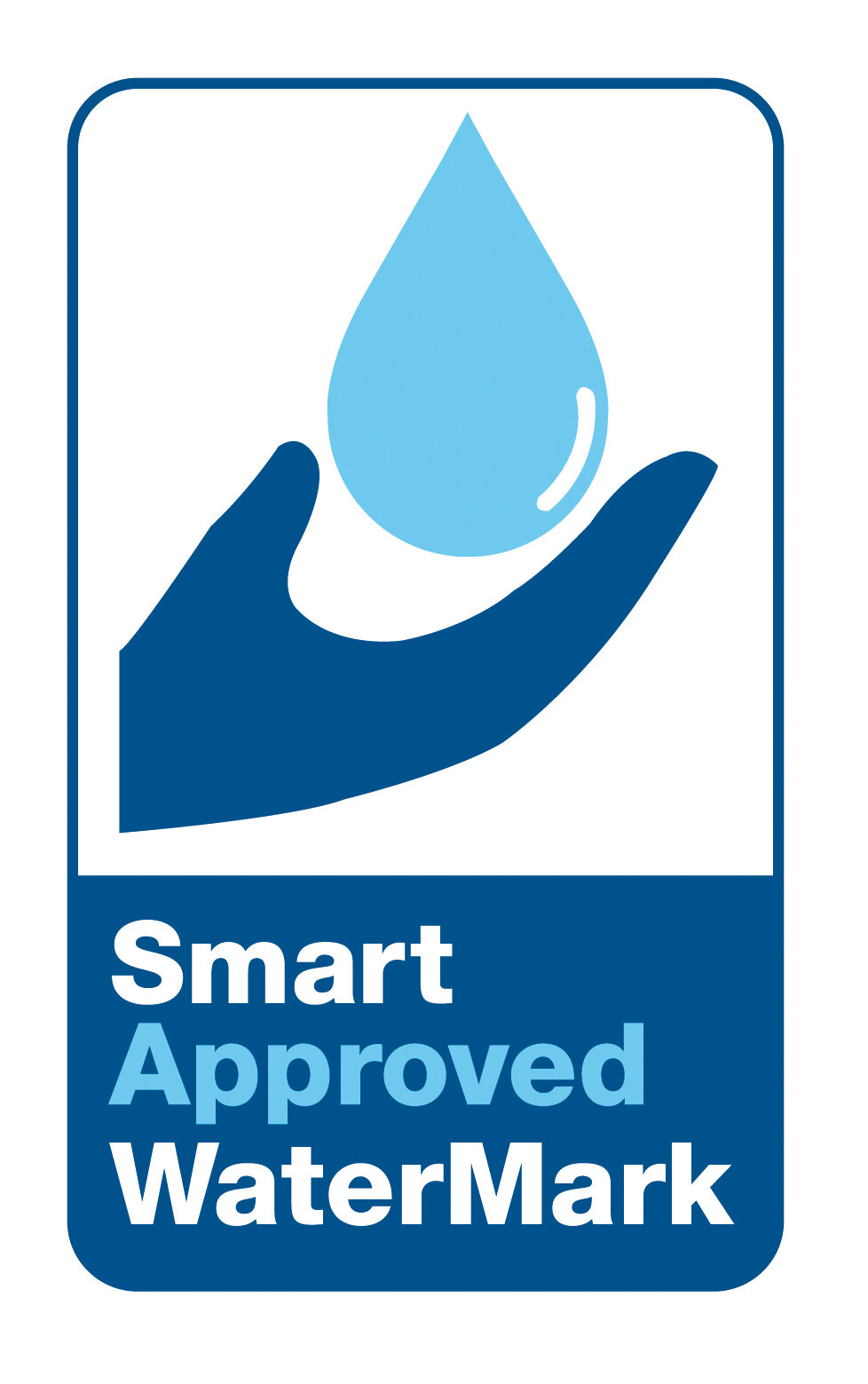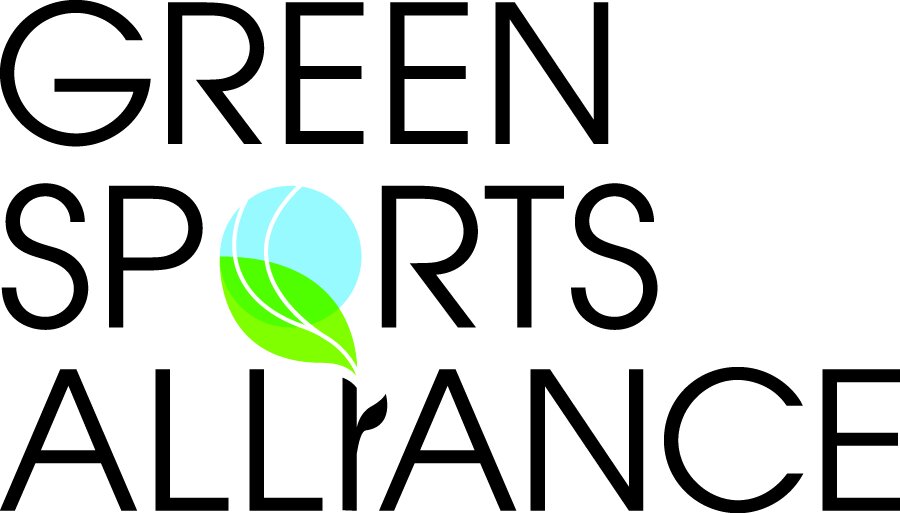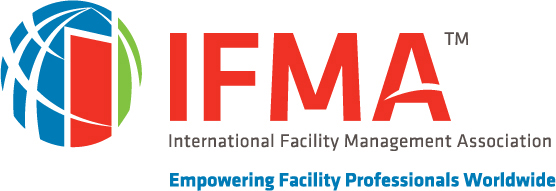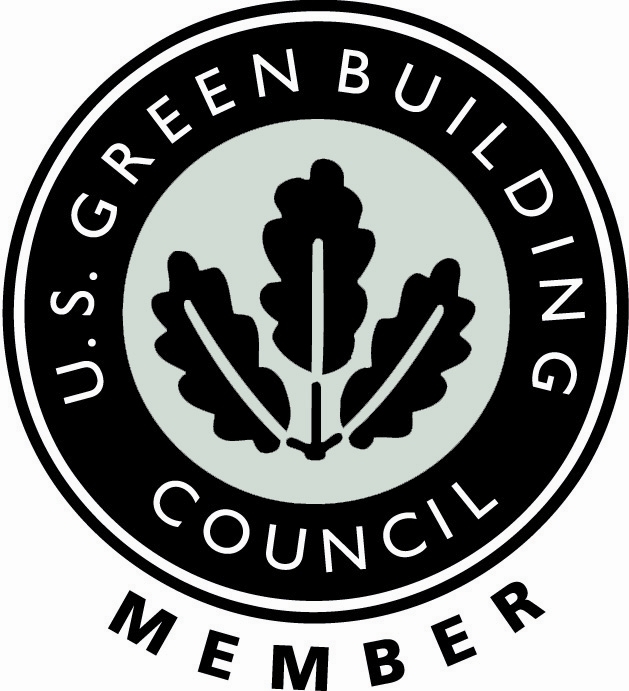When It Comes to Water, If You are Not at the Table, You Are on the Menu
NEWS: Press Release
States around the country are in court, at war over water. This is because 2022 is becoming another dry year around the country.
Among the biggest of these water wars are the following:
Florida, Georgia, and Alabama
Florida and Alabama say Georgia is taking too much of their shared but limited water reserves. Recently a court challenge ruled in Georgia's favor. However, Florida and Alabama are seeking new legal remedies to address their needs.
Nebraska and Colorado
This battle over water not only involves the two states but farmers and environmentalists have all lawyered up as well. Super dry Nebraska wants to build a canal in Colorado to tap the Colorado River. Colorado wants to build a similar channel to serve fast-growing but thirsty Denver. The courts will have to work this one out.
California and Environmentalists
A secret agreement just unveiled calls for farmers to give up billions of gallons of water to restore the state's fish habitats. The deal would pay farmers not to grow crops.
But Doug Obegi, with the Natural Resources Defense Council, says the plan is "illegitimate and exclusionary, and it's.… bad for fish and wildlife." He complains his organization was not allowed to participate in the discussions, saying it's an example of "if you are not at the table, you are on the menu."
Utah
Fast-growing but dry Utah wants to re-direct aquifer water from low population areas of the state to larger cities. The small towns are calling it a "water grab" that will limit drinking water for citizens and divert millions of gallons of water from farmers. Court fights are lining up, which could take years to settle.
"What we are witnessing is two things," says Klaus Reichardt, CEO, and Founder of Waterless Co., Inc, makers of waterless urinals and considered a water efficiency expert.
"Yes, droughts are behind the squabbling. But we still are not using water efficiently. Using water efficiently reduces consumption and helps ensure there is enough water to go around."
Waterless Co., Inc. "Pioneers in Advancing Water Efficiency"
About Waterless
Waterless Co. Inc. is now viewed as an icon in the no-water urinal industry. Based in Vista, Ca, the more than 30-year-old company is the oldest manufacturer of waterless urinals and related products in North America. Along with waterless urinals, the company offers a full line of cleaning solutions and sealants and trap/cylinders, all designed for Waterless and other brands of no-water urinals. Visit: www.waterless.com
Waterless Co. Inc.
1050 Joshua Way
Vista, CA 92081 USA
800.244.6364
Earth Day is April 22, 2022. Time To Think About Water
California is having its driest year ever. In West Texas, no one alive has seen this little rain. Drought extends from the Pacific coast as far east as Mississippi, Wisconsin, and Illinois.
Drought is raising food prices, which are already stratospheric. Wheat prices, worsened by a shortage due to Russia’s war in Ukraine, have spiked.
Soybeans are the highest in ten years. Avocados haven’t been this expensive since the 1990s. Corn prices are flirting with an all-time record. America’s drought will push them and others higher.
The U.S. Drought Monitor shows that the West’s current multiyear drought is “the most extensive and intense” in the 22-year history of the database.
“Right now, I can’t give anyone any good news,” said Rich Tinker, meteorologist, with the National Weather Service and the National Oceanic and Atmospheric Administration.
Access to water has become an issue in whether farmers are eligible for loans, according to Curt Covington, senior director of institutional credit and commodities expert at AgAmerica, one of the largest non-bank agricultural lenders in the U.S. No water…no loan.
A study from the University of California at Merced found that last year the drought cost the California agriculture industry more than $1.1 billion and 14,000 jobs.
Some California communities, particularly lower-income and neighborhoods of color, are without clean water. An estimated 12,000 residents of the state’s Central Valley ran dry during the drought of 2012–16. Thousands ran out of water last year.
There are no solutions right now, but we do have options. We have to use water more efficiently and that includes finding ways to use no water at all.
www.waterless.com
Source: Forbes Magazine, April 21, 2022
#water #agriculture #drought #waterefficiency
With Earth Day Coming Up, Its Time to Test Your Water Knowledge.
True or False. It is not worth it to try and collect the water that falls on your home during a rainstorm.
False.
If a house sits on a half-acre lot and one inch of rain falls on that lot, if collected, this would be more than 13,500 gallons of water, enough to take 339 baths.
True or False. Hawaii is the wettest state in the U.S.
True
In parts of Hawaii, it rains more than three hundred days per year, dropping twenty feet of water.
True or False. Arizona is the driest state in the country.
False
The driest state in the U.S. is Nevada. It’s followed by Arizona, Utah, New Mexico, and Wyoming. This can vary a bit each year. However, these are the five states considered the driest in the country.
True or False. Most of the drinking water in the U.S. comes from Lake Mead, outside of Las Vegas.
True
Lake Mead provides water for Las Vegas and Arizona, California, and parts of Mexico. The big concern about Lake Mead is that it has been drying up for more than a decade. That’s why there is a rush to find ways to access water from the Colorado River, which has less water than it did a century ago, primarily due to climate change.
True or False. Water efficiency and water conservation are the same things.
False
Water conservation is short-lived. People and organizations conserve water during a drought, for instance, but return to their previous water using habits after the drought has passed.
Water efficiency is a long-term reduction in water consumption. For instance, installing restroom fixtures that use less water than older models or waterless urinals that use no water at all.
True or False. About one-third of the U.S. is now experiencing some level of drought.
False.
Half the country is experiencing drought conditions, which are expected to worsen this summer.
True or False. Most of the water used in a facility is used to irrigate vegetation.
True-ish
This has historically been true. But as more facilities replace water- dependent vegetation with natural vegetation that typically uses less water, restrooms are becoming the area where most water is consumed. This is primarily due to flushing toilets and conventional urinals.
www.waterless.com
#water #climatechange #conservation #waterefficiency
For Earth Day 2022: Remember the Connection Between Water and Energy
Waterless® Co., Inc.Press Release
For Earth Day 2022: Remember the Connection Between Water and Energy
For Earth Day 2022, Waterless Co., Inc., would like to remind building owners, managers, and facility service providers that there is a close interconnection between water usage and energy conservation.
According to Klaus Reichardt, founder and CEO of Waterless, drilling for water, storing water, and delivering water to and from facilities uses a considerable amount of energy.
“This means if we can conserve water and use it more efficiently, we can also save energy,” explains Reichardt.
For example, 20 percent of all the energy currently used in California is used just to transport water.
Taking this a step further, some experts now believe most of the energy consumed in the Western half of the United States is in some way related to water production or delivery.
“In many ways, all of our conservation and sustainability efforts are interconnected in some way,” says Reichardt. “But with water, the connection with energy--and, with that, the need for imported oil--is rather dramatic.”
This is something we should all be thinking about today, especially because of the war in Ukraine.
Reichardt adds that this is true not only in the U.S. but all over the world, especially in underdeveloped countries where serious water shortages are becoming an everyday occurrence.
“[In] many areas of the world, water is accessible but the power, fuel, and energy necessary to drill and deliver it are not,” he says. “This is why for millions of women in underdeveloped countries, their number one job each day is to walk several miles just to find water and bring it [back] home to their families.”
Reichardt suggests that as Earth Day approaches, North Americans should try to view turning on a water tap as they would turning on a light switch: “Do it… but do it wisely.”
-end-
Available for Presentations on Water Conservation and Efficiency:
Klaus Reichardt is founder and CEO of Waterless®, Co., Inc., manufacturer of No-Flush Urinals, Vista, Calif. Reichardt founded the company in 1991 with the goal to establish a new market segment in the plumbing fixture industry with water conservation in mind. Reichardt is a frequent writer and presenter, discussing water conservation issues. He can be reached at klaus@waterless.com.
About Waterless Co., Inc.
Waterless® Co. Inc. has established a reputation as an innovative manufacturer, serving the building, plumbing, and janitorial industry for over 20 years. Based in Vista, Ca, Waterless Co. offers quality, innovation and expertise in water conservation and high efficiency products for building owners with a full line of Waterless No-Flush urinals, cleaning liquids, and cost saving accessories. Visit: www.waterless.com
Waterless Co.
1050 Joshua Way
Vista, CA 92081 USA
800.244.6364
Waterless Announces New Tagline: “Pioneers in Advancing Water Efficiency”
FOR IMMEDIATE RELEASE
Press Release
Waterless Announces New Tagline
Goal: to remember the past but focus on the future
Waterless Co., Inc., long known as an “icon” in the no-water urinal industry, introduces a new tagline, “Pioneers in Advancing Water Efficiency.”
According to Klaus Reichardt, CEO and Founder of the company, the new tagline reflects where the company has been, its expertise in the no-water urinal industry, its knowledge of water efficiency, and the future.
Waterless Co., Inc, is the oldest manufacturer of no-water urinals in North America. Based in Southern California, the company first began marketing waterless urinals in 1991.
“At the time, no other manufacturers were making no-water urinals in North America,” says Reichardt. “Rarely did you hear anyone use the term ‘water efficiency.’ We truly were pioneers back then in every sense of the word.”
Today, with the chronic and ongoing drought conditions in California and throughout the Southwest, Reichardt believes the new tagline will better position the company for further growth.
“There are several new players in the no-water urinal industry,” he says.
“However, building owners and managers should work with long-term suppliers and brands. Because we are pioneers and our fixtures have been installed in buildings for more than 31 years, we have earned their trust and confidence."
Reichardt also points out that recent market research studies predict significant growth in the waterless urinal industry over the next several years.
“We want this new tagline to help us take advantage of this growth. I am extremely optimistic that working together, our country can address its water challenges – and it will be easier than we think today.”
###
About Waterless Co. Inc.
Waterless Co. Inc. has established a well-respected reputation as being an innovative manufacturer of no-water urinal systems. Based in Vista, Ca, the 31- year-old company is the oldest manufacturer of waterless urinals in North America. The company offers a full line of Waterless No-Flush urinals, cleaning liquids, and cost saving accessories. Visit: www.waterless.com
Waterless Co. Inc.
1050 Joshua Way
Vista, CA 92081 USA
800.244.6364
The Six Cities Facing the Most Severe Water Challenges in 2022
Water shortage in China
It now appears that those cities experiencing droughts and water shortages in the past couple of years, are likely to experience water shortages in 2022.
This according to Waterless Co., Inc, manufacturers of no-water urinals, which monitors water conditions around the globe. According to the manufacturer, below are the six cities most likely to experience serious to acute water shortages in 2022:
Cape Town, South Africa
Cape Town, which was close to Day Zero a couple of years back, has made progress in using water more efficiently. But with a growing population and antiquated water infrastructure, it faces serious water challenges in 2022.
Mexico City, Mexico.
About half of this city’s water is shipped in from other parts of the country, which increases the cost of water considerably. Many residents can afford or are allowed access to running water about once per week.
Sao Paulo, Brazil
In 2015, Sao Paulo water utility companies declared a “state of calamity” as water reserves held just five percent of their maximum water supply. Since then, things have improved, but low precipitation and deforestation of the Amazon rainforest have left the city in severe drought conditions.
Beijing, China
This capital city gets its water from farming areas north and south of the city. But without water, Chinese farmers cannot grow crops for the country’s 1.3 billion people. Experts say China faces a daily balancing act, determining how much water should go to Beijing and how much to farmers.
Los Angeles, Ca.
The only American city on the list, the past few years have been some of the driest in more than 1,200 years. Improved water storage and water efficiency measures have helped Los Angeles stay water solvent, but it still faces serious water challenges.
Bangalore, India
Known as the “Silicon Valley of India,” the population has doubled since the 2000s and continues to grow. Some predicted the city would be unlivable by 2020 due to lack of water. It survived, but only because water is hauled in by trains and trucks daily.
“The United Nations predicts this decade will be our most difficult in history when it comes to water,” says Klaus Reichardt, CEO and Founder of Waterless Co., Inc. “Our only option is to reduce consumption and use water more efficiently.”
About Waterless
Waterless Co. Inc. is now viewed as an icon in the no-water urinal industry. Based in Vista, Ca, the more than 30-year-old company is the oldest manufacturer of waterless urinals and related products in North America. Along with waterless urinals, the company offers a full line of cleaning solutions and sealants and trap/cylinders, all designed for Waterless and other brands of no-water urinals. Visit: www.waterless.com
Why Go Waterless?
Many facilities are considering waterless urinals because they are regarded as an effective way to conserve water—making them a Green, environmentally preferable choice. Additionally, because water must be pumped by electricity, it is believed more than $100 per year/per urinal can be saved in utility costs by installing a waterless urinal, depending on the actual use of the fixture and local utility costs.
And because of these benefits, installing waterless urinals can help building managers and owners achieve credits toward Leadership in Energy and Environmental Design (LEED) certification.
Before 1990, the average urinal in the United States used as much as four gallons of water per flush. Today, because of legislation and increased conservation measures, conventional urinals use about one to one and a half gallons of water when flushed. However, this is still a significant amount of water—as much as 35,000 gallons per year per urinal.
Moreover, this water usage can be quite detrimental in the country’s most drought-prone areas, such as California and other western states. The average office building in the United States uses 14,695 gallons of water per day.* Waterless urinals have the potential to significantly reduce this water usage and relieve the water supplies in these locations.
Not only can no-water urinals be environmentally responsible and help reduce water usage, but the cost to install and maintain them is also catching the eye of many facility managers.
“The initial installation is easy and relatively inexpensive because you need only a drain line instead of a water and a drain line,” says David Rose, an architect in Farmington MI. “You also don’t have to contend with additional plumbing, flush valves, sensors, and the like, which can be costly maintenance headaches.”
Some school districts have also found less vandalism and restroom property damage because there are no valves, handles, or visible plumbing for students to tamper with.
How They Work
A no-water urinal works the same way as a conventional urinal, except without the water. A traditional flush urinal fills into a U-trap below the urinal filled with a small amount of water that prevents odors and sewer gases from escaping.
Waterless urinals also have a trap or cylinder, but it sits atop the drain area of the urinal. The cylinder is filled with a thin layer of liquid or sealant. Urine passes through the trap and sealant, forming a barrier that prevents odors from escaping. It also helps to eliminate evaporation of the urine, which can harm indoor air quality.
Cleaning and Maintenance
Waterless urinals are cleaned the same way as conventional urinals. Some models are designed to facilitate cleaning because they have a smooth interior “skin” or surface than what is found on a conventional urinal. They also have no water disbursement rims, which prevents the buildup of mineral deposits on the urinal.
The urinal’s trap insert requires attention, and on some models, the liquid sealant can be replenished, prolonging the trap’s life span and effectiveness. But depending on use, it must eventually be changed. This change happens only about two to four times a year in most instances.
Potential Drawbacks
Waterless urinals do have benefits. They use no water, cost less to install, reduce utility costs, and vandalism. Furthermore, many facility managers also believe no-water urinals are more sanitary because germs tend to multiply in damp conditions but die in dry conditions. Additionally, these urinals do not have to be “touched” by the user, decreasing the possibility of transferring germs and bacteria.
However, there are some drawbacks when switching to a no-water system. For instance, the cylinders used in waterless urinals can be pretty expensive on certain no-flush models and may need to be changed more frequently than initially thought. This may prove to be costly and eliminate any economic savings a facility hoped to attain.
Additionally, some facilities with few urinals, low water usage, or low sewer or water costs may not benefit by installing waterless urinals—especially if existing conventional urinals are still helpful.
Still, the economics are favorable from the beginning because no-water urinals are less expensive to install and maintain compared to conventional ones. “Overall, waterless urinals are an efficient and economical alternative to traditional urinals,” contends Rose.
Klaus Reichardt is Managing Partner of Waterless No-Flush Urinals, Vista, CA. His company has been manufacturing waterless urinals since 1989.
*Southwest Florida Water Management District
How Hotels Reduce Water Consumption
Being high-volume water users, hotels are always looking for new ways to reduce their water consumption, especially in areas where water supplies are scarce—such as in large portions of the western United States.
One water-saving method that has become near-eliminated is the daily washing of linens and towels. If linens and towels can go another day before washing and replacing, ask them to hang up towels for reuse vs. leaving them on the floor to receive freshly washed ones.
This has helped reduced water consumption. However, many larger hotel properties are looking for more ways to reduce water consumption. Two systems that are being incorporated and explored are xeriscaping and installing waterless urinals.
Changing the Landscape
One water-conservation step hotels take is planning or reevaluating their landscaping based on water consumption. For instance, the MGM Grand Hotel in Las Vegas, NV, once used most of its water for landscaping. It turned out that the amount used in the hotel's guest rooms is relatively modest. The big culprit was the facility's landscaping.
It has converted to xeriscaping, using low-water-consumption desert plants and ground materials. Now it has reduced water consumption by more than 50 percent. And it's not just at the MGM.
The Bellagio, world-famous for its "front yard" water show, has recently removed more than 20,000 square feet of turf and converted it to rock mulch. The facility has also transformed the watering system used on more than 1.5 acres of the shrub-landscaped area from overhead spray irrigation systems to drip irrigation. These measures have helped the property save a considerable percentage of its landscape water use.
Waterless Urinals
A second step hotels are taking to conserve water is installing no-flush urinals. Before 1989, urinals used about three gallons per flush (GPF). This was reduced to about 1.5 gpf with urinals installed after 1989, and today, urinals are required to use about one gpf or less for new construction.
But this is still a significant amount. It is estimated that just one urinal can use as much as 35,000 gallons of water per year.
With waterless urinals, urine passes through a trap and sealant. As the trap fills, the liquid flows under the barrier layer and into the conventional drainpipe, allowing the urine to be drained like a traditional urinal works.
This is why waterless urinals are getting considerable interest in all types of facilities, including hotels. And some major hotels, such as Hilton, are now installing them in various properties around the world. Plus, waterless urinals are easy and inexpensive to install because many plumbing requirements have been eliminated.
Concerns and Controversies
Although no one doubts that waterless urinals can save significant amounts of water, there have been some concerns and even controversy regarding how sanitary and environmentally protective they are.
For instance, when the San Diego Zoo installed more than fifty waterless urinals, officials were quick to comment that poor maintenance could cause hazardous bacteria to build upon the urinal surface, and the chemical cylinders, discussed earlier, could allow dangerous gases to escape.
However, researchers, including Dr. Charles Gerba, a well-known and respected microbiologist at the University of Arizona, dispute these charges. He says waterless urinals are more sanitary because having less water leaves little opportunity for bacteria to grow and because users don't have to "touch" faucets, eliminating cross-contamination.
Although the concerns have resulted in more research and studies, some question whether the plumber's associations may be more concerned with protecting jobs than sanitation. The San Diego County Water Authority notes that when low-flow toilets were first introduced, they were met with similar resistance, even though they are now widely accepted and have recognized standards throughout the United States.
Custodians and hotel housecleaners are sometimes unsure if waterless urinals require special cleaning procedures or products. The answer is no. Waterless urinals are cleaned the same way as a conventional urinal, although the overly harsh, powerful chemicals sometimes used to clean traditional urinals are not necessary or recommended.
Most no-flush urinals have highly polished finishes, similar to flushed urinals. Because no water is used, the rust and water deposits that form on the interior surfaces of traditional urinals do not develop. Urine is less likely to adhere to these surfaces.
Water—Use It Wisely
Water is essential to our health and the health of our environment. It's our most precious resource. Let's use it wisely.
Klaus Reichardt is CEO and founder of Waterless Co; Inc, Vista, Calif. Reichardt founded the company in 1991 to establish a new market segment in the plumbing fixture industry with water efficiency in mind. Reichardt is a frequent writer and presenter, discussing water conservation issues. He can be reached at klaus@waterless.com.
Green Without Water
New York’s Times Square seems an unlikely place to build one of the “Greenest,” most high-tech, and most expensive skyscrapers in the United States. But that’s exactly where the $1 billion Bank of America Tower is located.
The 2.1 million-square-foot building has become the bank’s New York headquarters. At 51 stories, the building incorporates a variety of leading-edge technologies such as the most advanced security and antiterrorism systems now available; super-sophisticated wiring and electronics for high-speed Internet, data, and other communications systems; wind turbines for the generation of power; water recycling equipment; and advanced energy application systems to regulate and reduce energy use.
Even the restrooms are state of the art. Lighting and high-performance HVAC and ventilation systems are centrally controlled electronically and activated as needed or requested. Advanced water conservation measures—such as low-flow faucets, toilets, and showers—are installed. And, when it comes to the urinals, the developers decided to go a step further. No-flush or waterless urinals are installed in all the men’s restrooms.
The new Bank of America is not alone in installing waterless urinals. All types of facilities, new and old, including schools, dormitories, office buildings, and hotels, are now installing urinals that require no water. For instance, the Royal Hotel in Sydney, Australia, has recently decided to use waterless urinals in all of their shared area men’s restrooms. “We installed waterless urinals for several reasons,” says Dennis Callahan, owner of the Royal Hotel. “It was a more cost effective as water is becoming increasingly expensive.”
The Issue of Odor
“It’s interesting to note that this hotel owner installed the waterless urinals to help eradicate restroom odor problems,” says Klaus Reichardt, Managing Partner of Waterless No-Flush™ Urinals in Vista, California. “Many people are still concerned that no-water urinals cause odors.”
Reichardt explains that this is because most people, including architects, contractors, and many building engineers, do not know how a waterless urinal works. “With a conventional flush urinal, the urinal bowl retains a small amount of water after each flush,” he says. “This prevents sewer gases from escaping. As long as the urinal and surrounding areas are flushed and kept clean, malodors from the urinals should not be a problem.”
Waterless urinals work in similar ways and use a trap, but it’s a different kind of trap. According to Reichardt, waterless urinals have a vertical trap design; a cylinder filled with a thin layer of sealing liquid sits atop the drain area of the urinal. Urine passes through the trap and sealant, forming a barrier that continuously prevents odors from escaping.
“It works essentially the same as a flush urinal, just without the water,” says Reichardt. “The urine flows under the barrier layer and into the central tube connected to the conventional drainpipe, allowing the urine to be drained.”
Other than this, waterless urinals look—and are used—the same as traditional urinals but without the flush handles or sensors to activate water. They are also cleaned the same way. Usually, all that is required is a general-purpose cleaner applied with a cleaning cloth, johnny? mop, or sponge.
Waterless Urinal Savings and Health Benefits
According to some experts, there are several reasons for the growing interest in waterless urinals, especially in hotels. Although waterless urinals still need to be connected to a drain, there is no need to install the plumbing that carries water to the drain, which can be a sizable savings for a large hotel or other structure. Additionally, electronic sensors, batteries and other components of a traditional flush urinal are unnecessary. All the above also reduce urinal maintenance.
Then there is the water savings itself. Traditional urinals, installed after 1990, use about one to one and a half gallons of water per flush. Older units can use as much as two to four gallons per flush. Considering that the average urinal is flushed about 2,000 times per month, this means that just one urinal can use more than 35,000 gallons of water per year—as much water as a family of four uses in one year. *
“Not only can this water and wastewater use be costly,” says Reichardt, “but in drought-plagued areas of the world, including many parts of the United States, it can be wasteful. It’s one reason more advanced buildings such as Bank of America, concerned about Green and sustainability issues, are installing waterless urinals.”
For hotels, as well as many other facilities, there are health and hygiene benefits as well. Minimizing cross-contamination is a prime concern in the hotel industry. Because germs and bacteria are often spread by touching surfaces in restrooms, eliminating the need to touch a urinal handle helps prevent the possible spread of harmful microorganisms.
Robert Kravitz is a frequent writer for the hotel and building industries.




















